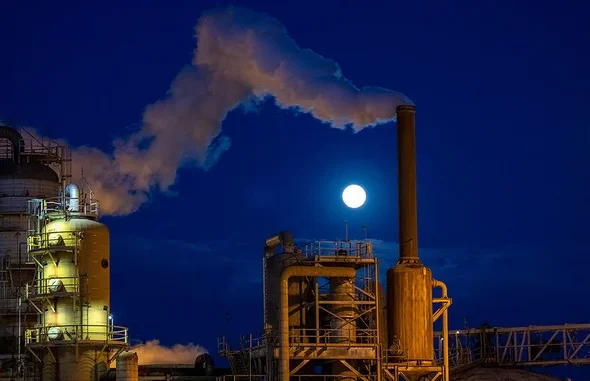
The funding, announced last week, will go to up to seven pilot projects. Funding recipients will test whether a new kind of geothermal technology called EGS—enhanced geothermal systems—could be an economic way to transform heat almost anywhere on the planet into electricity.
It is part of the Biden administration’s efforts to halve greenhouse gas emissions by 2030 and transition to a zero-carbon grid by 2035. Geothermal energy has already been an effective way of generating power for decades, but it is currently limited to a handful of regions with active volcanoes, hot springs and geysers.
DOE’s funding is aimed at accessing heat buried deep inside the planet, which is in theory available everywhere. While current geothermal plants use hot water from geysers to operate turbines, ESG effectively builds human-made geysers. The method generates carbon-free power by injecting a flow of cold, high-pressured water into rock, where it is heated up and then travels through pipes back above ground.
More than 5 terawatts of heat resources exist in the United States, according to DOE—enough power to meet the electricity needs of the entire world. A recent analysis from the agency projects that successful development of EGS could provide 90 gigawatts of power to the U.S. grid by 2050.
“The attractive thing about EGS over the conventional geothermal systems is that it’s taking advantage of heat everywhere, on every continent, at five to 15 kilometers depth,” said Stuart Simmons, a research professor at the Energy and Geoscience Institute at University of Utah. “The funding will provide the seed investments to further de-risk the technology and [help] its geographic spread.”
Like gas and coal power plants, geothermal systems can respond to fluctuating power demand. That means that they complement solar and wind power, which are vulnerable to changing weather conditions, said Mark White, a geothermal expert and a mechanical engineer at Pacific Northwest National Laboratory. An EGS system, for example, could theoretically increase power output during peak demand by increasing the flow of water injected into rocks.
Simmons said the hefty price tag for drilling is the biggest challenge to building commercially viable EGS. Developers would need a very hot fluid for efficient power generation, which means they would need to drill several miles deep into the Earth’s crust, rendering projects prohibitively expensive.
DOE’s funding is aimed at accessing heat buried deep inside the planet, which is in theory available everywhere. While current geothermal plants use hot water from geysers to operate turbines, ESG effectively builds human-made geysers. The method generates carbon-free power by injecting a flow of cold, high-pressured water into rock, where it is heated up and then travels through pipes back above ground.
More than 5 terawatts of heat resources exist in the United States, according to DOE—enough power to meet the electricity needs of the entire world. A recent analysis from the agency projects that successful development of EGS could provide 90 gigawatts of power to the U.S. grid by 2050.
“The attractive thing about EGS over the conventional geothermal systems is that it’s taking advantage of heat everywhere, on every continent, at five to 15 kilometers depth,” said Stuart Simmons, a research professor at the Energy and Geoscience Institute at University of Utah. “The funding will provide the seed investments to further de-risk the technology and [help] its geographic spread.”
Like gas and coal power plants, geothermal systems can respond to fluctuating power demand. That means that they complement solar and wind power, which are vulnerable to changing weather conditions, said Mark White, a geothermal expert and a mechanical engineer at Pacific Northwest National Laboratory. An EGS system, for example, could theoretically increase power output during peak demand by increasing the flow of water injected into rocks.
Simmons said the hefty price tag for drilling is the biggest challenge to building commercially viable EGS. Developers would need a very hot fluid for efficient power generation, which means they would need to drill several miles deep into the Earth’s crust, rendering projects prohibitively expensive.
Successful EGS projects require multiple rounds of fracturing to connect those two wells — the drilling skills that the hydraulic fracking industry mastered nearly a decade ago.
Enhanced geothermal systems might provide a valuable opportunity for oil and gas industry to transition to a low-emission business with their existing expertise and capital investments, White said.
“You see a lot of these oil companies being very interested in geothermal right now because there’s a natural transition from [fracking] expertise to geothermal,” he said.
Reprinted from E&E News with permission from POLITICO, LLC. Copyright 2023. E&E News provides essential news for energy and environment professionals.



